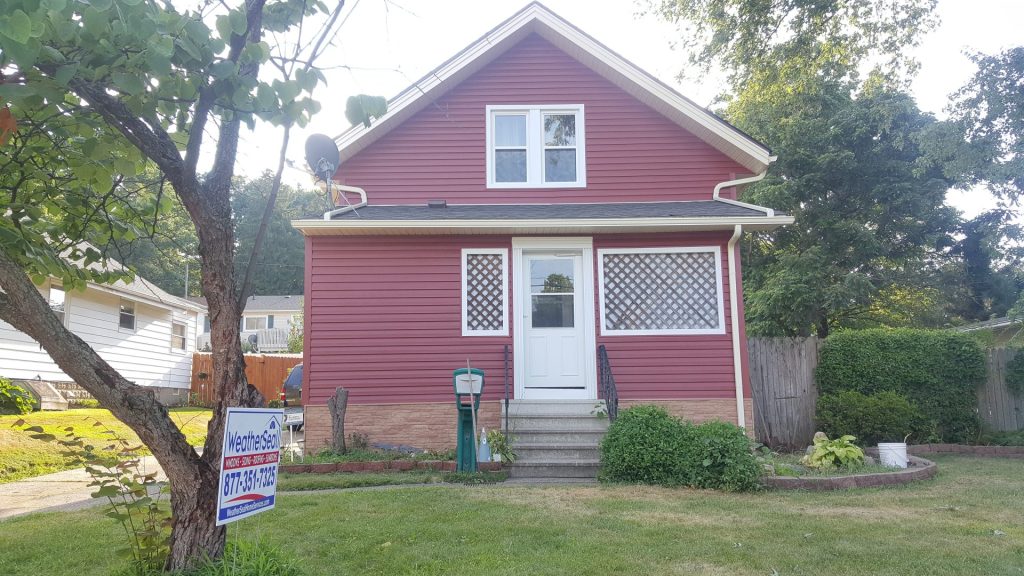
The gentle hum of the refrigerator, the distant laughter of children playing, the soft rustle of leaves outside your window—these are the sounds of home. But what happens when that gentle soundscape is shattered by the daily intrusion of roaring traffic, late-night neighbors, or the incessant drone of construction? Noise pollution isn’t just an annoyance; it’s a constant, low-grade stressor that can disrupt sleep, shatter concentration, and erode your sense of peace.
We often invest in visual comforts—paint, furniture, lighting—but neglect the crucial element of our home’s auditory environment. The good news is that one of the most powerful tools to reclaim your tranquility is already a hero in home maintenance: weathersealing. While celebrated for saving on energy bills, its profound impact on soundproofing is a well-kept secret. This guide will take you on a deep dive, moving beyond draft prevention to explore how you can strategically use weathersealing to engineer a quieter, more serene home.
Section 1: The Science of Silence – Why Gaps Are Your Enemy
To defeat an enemy, you must first understand it. Unwanted sound infiltrates your home in the same way cold air does: through the path of least resistance. In acoustics, these are known as “sound leaks” or “flanking paths.”
Sound travels in waves. When these waves hit a solid object like a wall, some of the sound is reflected, some is absorbed, and some is transmitted through the material. However, even the most robust wall is rendered ineffective if there’s a tiny gap or crack.
Sound Transmission Class (STC): The Scorecard for Silence: Walls, windows, and doors are often rated with a Sound Transmission Class (STC) score, which measures how well they block airborne noise. A higher STC rating means better sound insulation. A standard interior wall might have an STC of 33, while a specially constructed soundproof wall could be 50+. However, a 1% gap in a wall with an STC rating of 50 can degrade its performance by up to 50%, effectively reducing it to an STC of 25! This is why sealing air gaps is the single most important first step in any soundproofing project.
The Double-Edged Sword of Sound Leaks: These gaps allow for the direct passage of sound waves. Think of it like water pouring through a hole in a bucket. No matter how thick the bucket’s walls are, the hole defeats the purpose. Sealing these leaks with the right weatherseal is like plugging the hole—it restores the integrity of the entire structure’s sound-blocking capability.
Section 2: Become a Sound Detective – Your DIY Home Sound Audit
Before you can solve the problem, you need to find its source. It’s time to put on your detective hat and conduct a thorough “sound audit” of your home.
What You’ll Need:
A flashlight
An incense stick or a smoke pen
Your own ears and a quiet time of day
The Step-by-Step Audit:
The Visual Inspection: On a bright day, turn off all the lights inside a room and look for daylight peeking through the edges of doors and windows. If light can get through, so can sound. Use your flashlight to inspect the seals around existing weatherstripping—is it cracked, compressed, or missing entirely?
The Airflow Test: On a breezy day, or by creating pressure with a box fan facing out a window, light an incense stick. Carefully move it around the perimeter of windows, doors, electrical outlets on exterior walls, vents, and even where the wall meets the floor. If the smoke flickers or is drawn in a specific direction, you’ve found an air leak—and a significant sound leak.
The Listening Tour: Wait for a time when the external noise you want to block is present. Close all windows and doors and walk slowly through your home. Listen intently. Where does the sound seem loudest? Press your ear close to different surfaces (be careful!). You might be surprised to find that a significant amount of traffic noise is coming through a mail slot or the bottom of your front door.
Your Audit Checklist – Common Noise Culprits:
Perimeter of window sashes
Top, bottom, and sides of all exterior doors
Sliding glass door junctions
Mail slots
Pet doors
Recessed lighting fixtures
HVAC vents and returns
Electrical outlets and switch plates on exterior walls
Where plumbing enters the wall under sinks
Section 3: The Arsenal of Quiet – Choosing the Right Weatherseal for Sound
Not all weatherseals are created equal when it comes to acoustics. The ideal material for soundproofing is dense, durable, and creates a complete, airtight seal.
Material Type | Description | Best For Soundproofing | Use Cases & Notes |
Dense EPDM Rubber Strips | A durable, synthetic rubber that resists hardening and compression. Often comes in D, P, or E profiles. | Excellent | Creates a robust, long-lasting seal around door frames and window sashes. Its density is highly effective at blocking a wide range of sound frequencies. |
Silicone Strips/Tubing | Highly flexible and extremely durable, maintaining its elasticity in extreme temperatures. | Excellent | A premium choice for windows and doors. Its flexibility allows it to conform perfectly to irregular gaps, creating one of the most effective airtight seals. |
Acoustic Sealant | A specialized, non-hardening caulk designed to remain flexible. | Essential | For sealing the fixed gaps around window and door frames (where the frame meets the wall). Standard caulk will shrink and crack, breaking the seal. |
High-Density Foam Tape | Closed-cell foam is much more effective than open-cell. It’s dense and resists air and sound passage. | Good | A versatile and affordable option for a variety of gaps, like window sashes or interior doors. Ensure you choose high-density, closed-cell foam. |
Door Sweeps & Bottoms | Seals the large, problematic gap at the bottom of a door. | Critical | Look for heavy-duty sweeps with a thick vinyl or rubber seal. For the ultimate solution, an automatic door bottom mortised into the door provides a perfect seal when closed and retracts when opened. |
V-Strips (Tension Seal) | A plastic or metal strip that folds into a ‘V’ shape to create a tension seal. | Fair to Good | Effective for the sides of double-hung or sliding windows. Less dense than rubber but creates a very tight seal against drafts and high-frequency noise. |
Section 4: A Layered Defense – Creating a Holistic Soundproofing Strategy
Weathersealing is your foundational layer, but for maximum quiet, it works best as part of a team. Once you’ve sealed all the leaks, you’ve essentially maximized the performance of your existing walls and windows. Now, you can consider other elements:
Upgrade Your Doors: If you have a hollow-core exterior door, no amount of weatherstripping will stop sound from passing through the door itself. Upgrading to a solid-core wood or composite door can make a dramatic difference.
The Power of Windows: The glass itself is a major sound path. If new windows are an option, double- or even triple-pane laminated glass windows offer superior sound reduction. For a budget-friendly alternative, heavy, sound-absorbing curtains can dampen a surprising amount of noise.
Mass and Density: Adding mass to your walls (like an extra layer of drywall) is a more involved project, but it’s a core principle of soundproofing.
By first applying meticulous weathersealing, you ensure that any further investment in these bigger-ticket items isn’t being undermined by simple, fixable leaks.
Conclusion: The Dual ROI of Peace and Performance
Investing a weekend in a thorough weathersealing project offers a return on investment that few home improvements can match. You’ll immediately notice the obvious benefits on your next energy bill. But the true, and arguably more valuable, return is the one you feel—the ability to shut the door on the world and exist in a space that is truly your own.
It’s the uninterrupted video conference, the peaceful night’s sleep, the quiet morning coffee without the soundtrack of rush hour. By transforming from a simple draft-stopper into a silent guardian, weathersealing doesn’t just protect your home; it enhances your quality of life.








